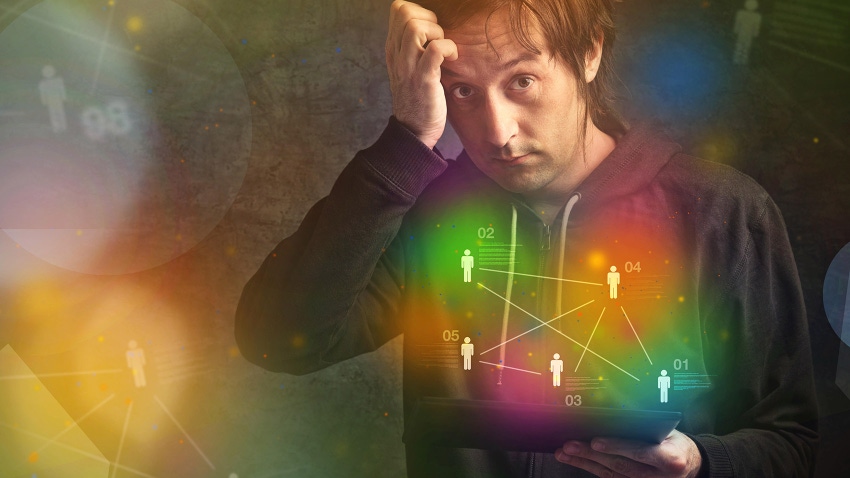

Working with Non-IT Users Who Do IT
source link: https://www.informationweek.com/it-leadership/working-with-non-it-users-who-do-it
Go to the source link to view the article. You can view the picture content, updated content and better typesetting reading experience. If the link is broken, please click the button below to view the snapshot at that time.
Working with Non-IT Users Who Do IT
April 19, 2024

More users are now seeing IT responsibilities being written into their job descriptions, but they still lack IT backgrounds.
This shows up in a variety of ways:
The marketing person who is assigned to perform market research and must develop their own database;
The financial analyst who is asked to develop and run risk analyses each month;
The engineer who runs a CAD system that must interface with the downstream manufacturing systems;
The remote office or plant “geek” who maintains networks and automation equipment;
The sales support worker who is asked to develop a no-code application that matches up products with customers.
These user IT efforts get their start because user departments no longer feel that they can wait out IT backlogs to get their needs addressed. Recent advances in application development and analytics tools allow workers in those departments to do more of their own IT work. This has now grown into a full-scale adoption of citizen development, where users develop their own IT solutions.
In many cases, IT departments are welcoming this user engagement. Users can get their IT needs addressed faster, user frustrations are reduced, and, from a business perspective, users know their areas of expertise and can better understand what they want for the business.
Related:Citizen Developers: 8 Ways IT Can Strengthen the Ties
IT can capitalize on these benefits of citizen development, too. The keys to success are effective collaboration with end users and a focus on methods of integrating new technologies and applications that come from user departments into the overall IT architecture.
Step 1: Integration
Citizen development works best when user departments can address their own IT needs and they don’t have to depend upon integrations for their apps with anything but the core system that their department already uses (For example, finance generates analytics reports from its financial systems). What happens over time, however, is that users see the potential to expand their apps to include more data from systems that are outside of their departments. For example, finance wants to analyze financial performance against sales and production figures.
IT must get involved as soon as multiple system boundaries get crossed, because linking these systems together requires technical integration that goes beyond the scope of user IT skills. Integration is never a simple task. The process can also be time-consuming. However, if IT maintains active communications and collaboration with citizen developers, everyone can sit together to brainstorm where they foresee their applications extending in the future. The “heads ups” from these meetings can cue IT about which system integrations to prepare for next before the demand hits.
Related:Why Low Code is the Great Unifier for Total Experience
Step 2: IT Optimization and Leveraging IT's Knowledge.
In analytics alone, recent numbers show that enterprises were not using 73% of their available data. In other cases, user departments were building their own data silos with applications and data that they were creating on their own.
Meetings get lengthy when there isn’t a single source of data truth, and companies miss key insights when they don’t have a total data picture of how the company is doing.
IT is the only department that can see the entire enterprise data, applications and systems. This places IT in a unique position to see when new developments in individual user areas can be leveraged for benefit throughout the organization, and to advocate for that expansion.
Step 3: Security and Asset Detection
Using zero-trust networks and asset management software automates the identification of additions, changes or subtractions of assets from IT networks. This automation gives IT seamless visibility into all enterprise IT functions and data. It also makes it easy to track end user IT activities, even if IT hasn't been informed of them.
Related:How to Build a Team of Talented Citizen Developers
Having this track and trace ability enables IT to ensure that proper security protocols and practices are being followed, and to step in if they aren’t. The beauty of this process is that it is largely automated and invisible to citizen developers. The only time users are aware of it is when there is a security breakdown, and IT must step in.
Step 4: Technical Support
Will user citizen developers be entirely self-sufficient, or will they still need IT help?
For no-code applications, users are fairly self-sufficient because development can be done in a point and click, plain English context. On the other hand, low-code applications usually require access to subroutines that run other IT systems and infrastructure that IT controls, so users will need IT's help.
Finding a Sweet Spot of Collaboration
User citizen development still requires IT support and control over security, governance and more complex applications. It’s also important for companies to leverage as much of their IT work and data as they can, and IT is in a unique position to champion this. The key is finding the “sweet spot” of collaboration so both IT and end users can carry out their responsibilities, with maximum benefit to the enterprise.
Recommend
About Joyk
Aggregate valuable and interesting links.
Joyk means Joy of geeK